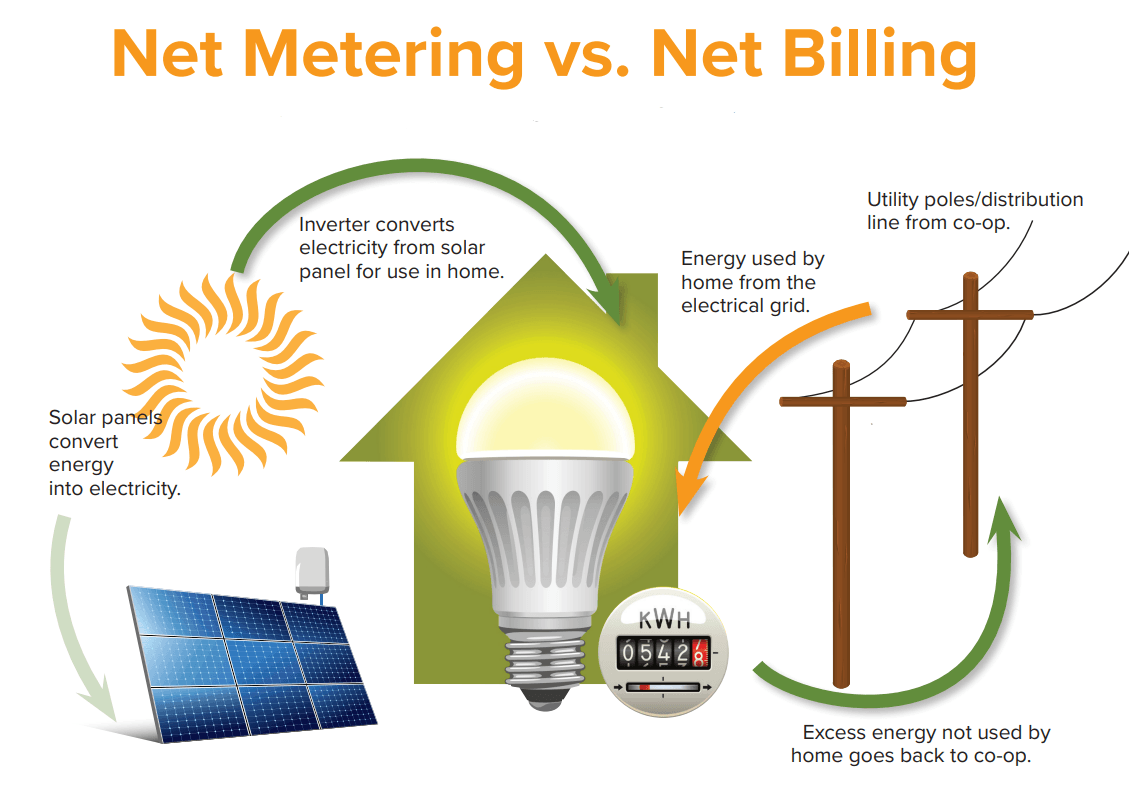What is the difference between Net Metering & Net Billing
Net metering vs. Net billing

Co-op Member-Generated Power As member-owned distributed generation has evolved, so has your electric cooperative’s incorporation of member-produced energy incentives to your monthly rates.
Net metering—the procedure that allows co-op consumer-members to “bank” surplus member-generated energy in the electric grid for future use (credit) at its retail cost—has given way to net billing.
Net billing—in which member-generated power injected to the electric grid is priced at the wholesale value of the energy received from the member—has become the accepted practice among member-owned, not-for-profit electric cooperatives.
Net Metering vs. Net Billing
The topic of net metering versus net billing centers on the appropriate value for excess energy that’s sent to the cooperative when member generation produces more power than can be used at your home or business at the time of generation. Because our cooperative’s retail energy rate includes the costs of maintaining our poles and wires, as well as staffing costs, our retail energy rate is much greater than the value we receive from excess generation; in other words, our fixed costs, which aren’t reduced by excess generation. Net billing allows co-ops a more equitable balance of power generation cost and electric distribution expense.
Under net metering, your co-op pays more for distributed generation that its actual worth to the cooperative. Because co-ops are member owned, the net metering model means that those surplus costs are passed along to the rest of the membership. With net billing, the co-op pays the same amount for distributed generation as it pays for electricity generated by other sources—a fair price for all members.
Why the Change to Net Billing?
Electric cooperatives are member-owned and governed, not-for-profit organizations, based on guiding principles:
1. Open and voluntary membership
2. Democratic member control
3. Members’ economic participation
◊ Members contribute equitably to, and democratically control, the capital of their cooperative. At least part of that capital remains the common property of the cooperative. Members allocate surpluses for any or all of the following purposes: developing the cooperative; setting up reserves; benefiting members in proportion to their transactions with the cooperative; and supporting other activities approved by the membership.
4. Autonomy and independence
5. Educations, training, and information
6. Cooperation among cooperatives
7. Concern for community
In deference to Principle 3, electric cooperatives are obligated to operate evenly and proportionately to benefit its members fairly. While policies vary per co-op, the decision to convert to net billing is in accordance with cooperative principles.






